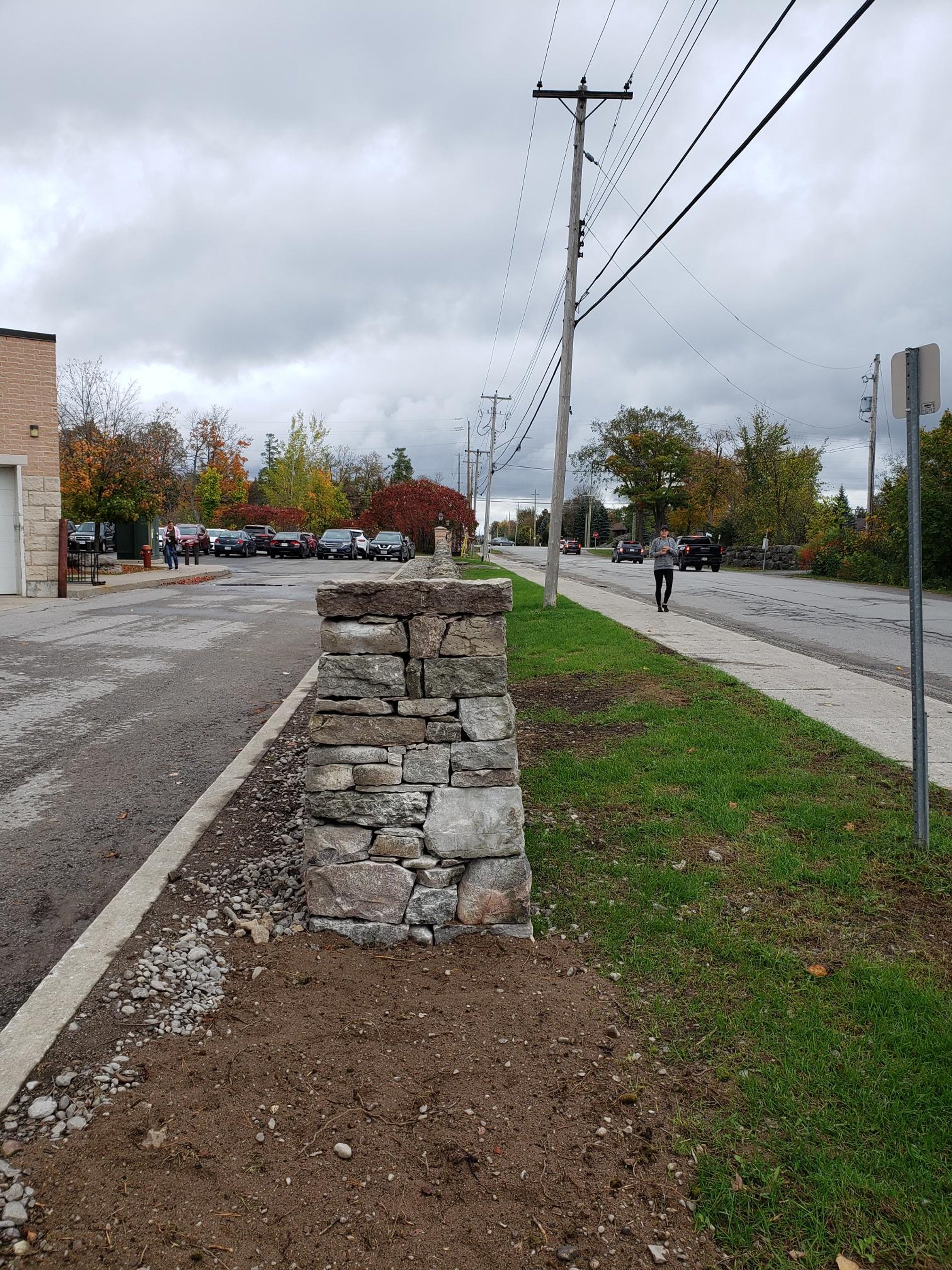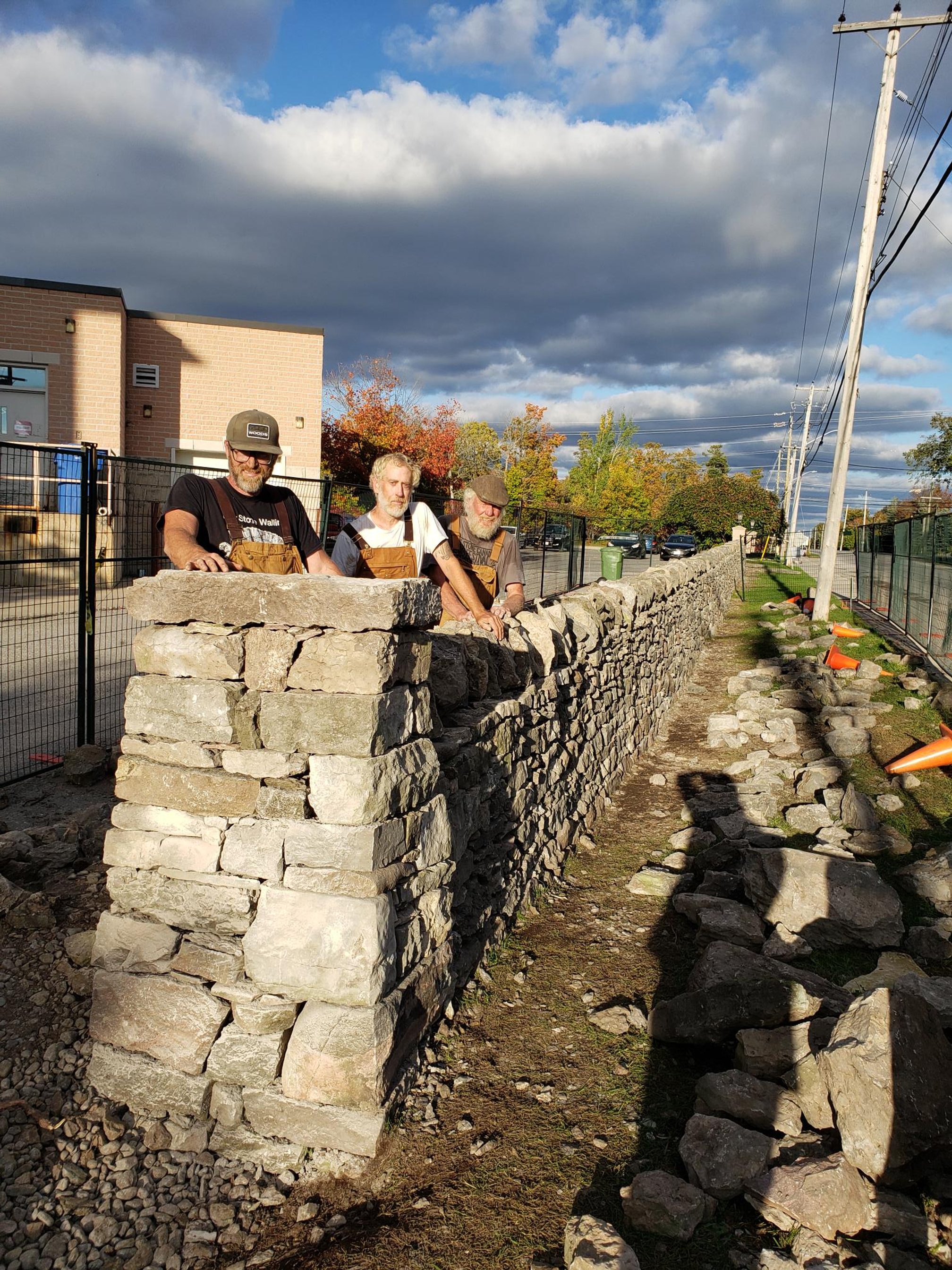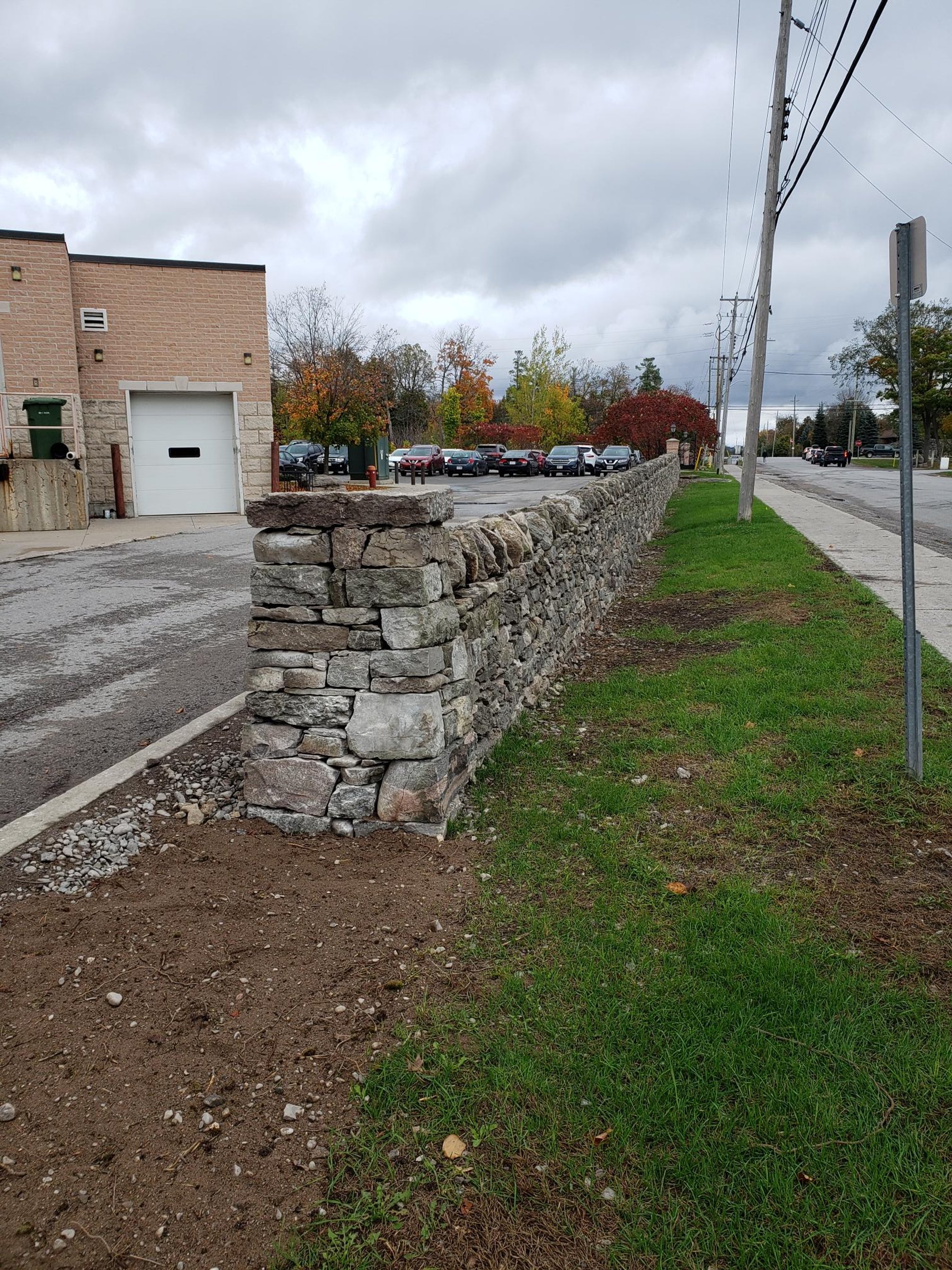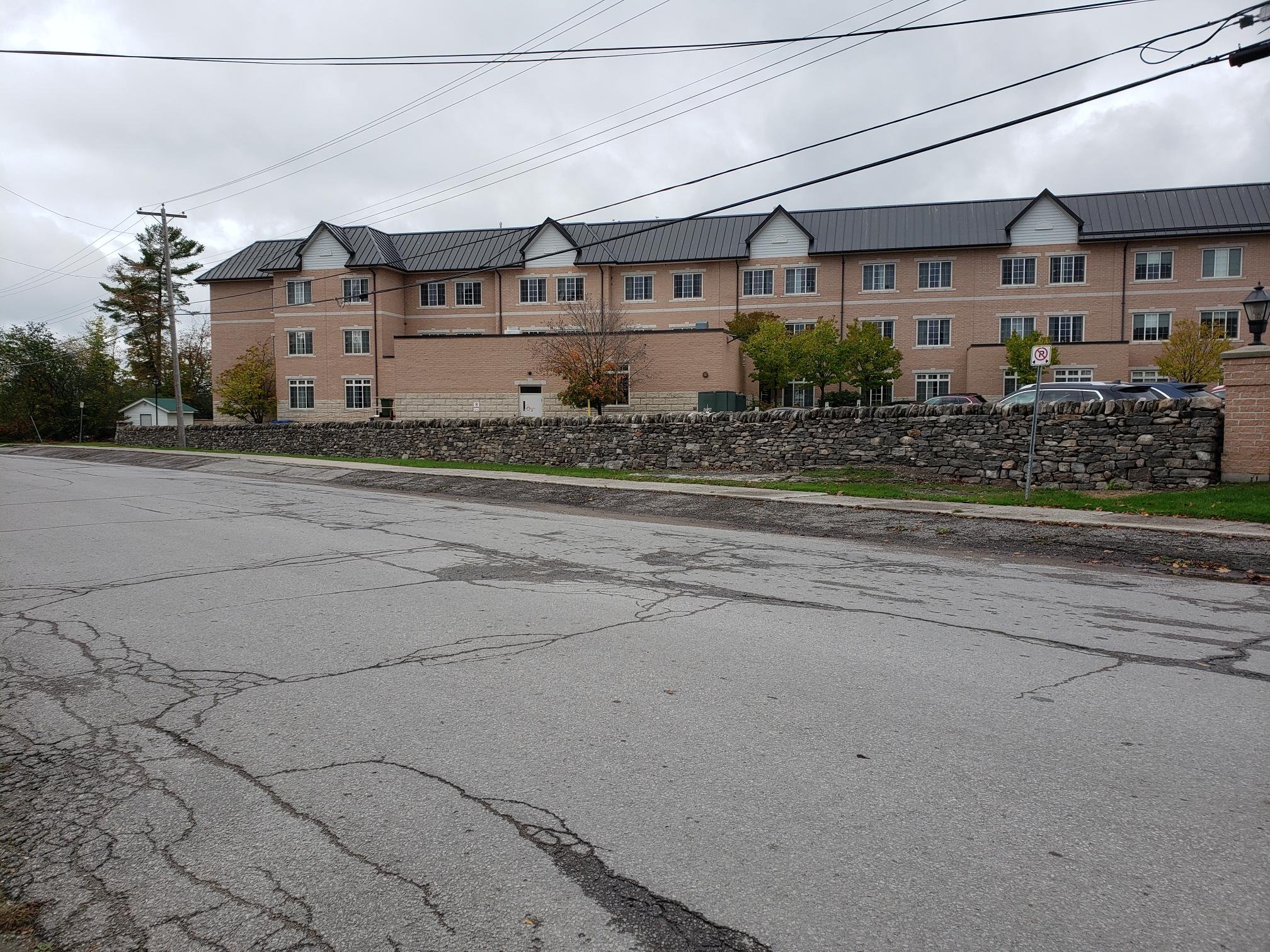Architectural Importance of the Edgewood Wall/Fence
Cross-section of dry stone wall building technique
A foundation is laid, and stones are positioned on top. Smaller, filler stones augment the centre, usually called Heart Stone. At points, strong flat Through or Cross Stones are laid to reinforce the structure. The entire picturesque wall is crowned with Top or Cap Stones. To fill in the gaps left by missing stones, our wall will be reconstructed using stones donated by the owners of the Boyd property adjacent to the Museum. The unique construction is strong enough to last a hundred years or more.
As to architectural importance, the Boyd Edgewood/Case fence is an example of the double wall fence. The double wall is actually two rows of stone built along the area to be walled. The fences are representative of the typical style – foundation stones set in ground and then rows of large flat stones decreasing in size as the courses of stones are added. Tie-in (or Cros or Through) stones were often used in these fences, as seen in the recent reconstruction of the Boyd museum fence. These tie-ins bind the two walls together serving to increase the integrity of the wall. The interior of the two fences is typically filled with smaller stones – which were also noted during the recent repairs to the museum fence – this is called “Hearting” or “Filling”. Dry stack was used because mortar was difficult to obtain in large quantities and to transport to these sites. Of course, the wealth of the proper size field stones in the area to build the fence, as more and more farmers’ fields were cultivated, would not be the case today. Dry stone stack fences are considered a lost art form, the craftsmanship is still limited to a few highly skilled individuals. During the restoration process of the Edgewood Wall, several volunteers will be trained on the craft. In the unlikely event that the wall needs repairs in future, Bobcaygeon can then draw on local talent. The expense to build new has all but eliminated this style of fencing. Repairs on these historic fences, are typically done with mortar thus compromising the historic integrity of the wall. The Edgewood Wall will be restored without mortar to maintain its true heritage. As some stones have been lost over the years, the restoration project will require the addition of stone to complete the project. The owners of the Mossum Boyd property, located across from the Library/Boyd Museum, have donated stone for the Edgewood wall, so it will be reconstructed using “Boyd” stone, thus maintaining the heritage of the wall.




